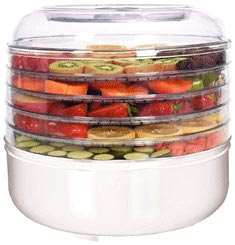 Excited about your latest dehydrator purchase because now you can brag to your friends that your Mangos and tomatoes have a longer shelf life than theirs? Well, before you start saying “I told you so”, ask yourself: do I really know everything there is to know about the dehydrator? The answer, most likely, is probably not. Seeing demonstrations in the supermarket is one thing, but actually using at home is something else.
Excited about your latest dehydrator purchase because now you can brag to your friends that your Mangos and tomatoes have a longer shelf life than theirs? Well, before you start saying “I told you so”, ask yourself: do I really know everything there is to know about the dehydrator? The answer, most likely, is probably not. Seeing demonstrations in the supermarket is one thing, but actually using at home is something else.
Here’s three important things you should know about the dehydrator and how to use it:
1. Cuts and Time Crunch:
When preparing your food source, make sure you chop them up roughly the same size, that way it’ll dry at the same time. And slice between 1/4 to 1/2 inch thick for better results. Strawberries, for example, should be cut in half, green beans cut long ways and fruits — in general — should be cut across the core.
2. Be quick:
Try and dehydrate the food as brisk as possible; the higher the temperature the better. If in doubt, follow the manufacturer’s guidelines as to what temperature works best for fruit and other food sources. Then afterwards, cool the food before storing in an airtight container or a plastic bag to keep out moisture. Oh, and if you are doing meat, freeze your dehydrated meat otherwise you run the risk of it going rotten.
3. What to make?
Now that you have the dehydrator, what to make? You can make things like fruit roll ups and even dehydrate tomato sauce from a jar (perfect for camping trips). You can dabble in: zucchini chips, sun-dried tomatoes and sweet peppers, garlic and sweet red peppers, dried brittle, Beef jerky and fruit-yogurt leathers. World is your oyster: go forth and experiment.